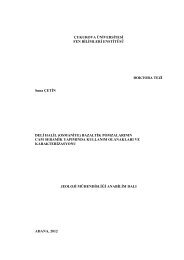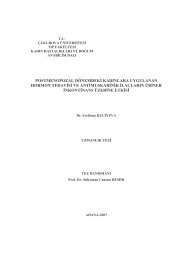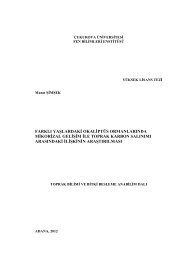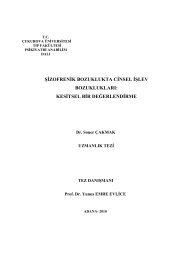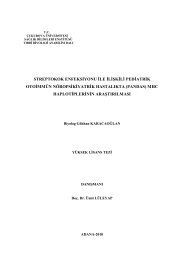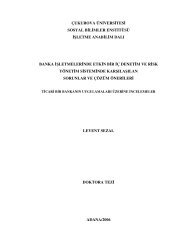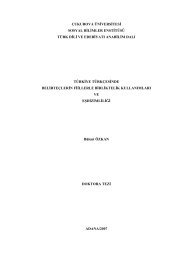ÇUKUROVA UNIVERSITY INSTITUTE OF NATURAL AND APPLIED ...
ÇUKUROVA UNIVERSITY INSTITUTE OF NATURAL AND APPLIED ...
ÇUKUROVA UNIVERSITY INSTITUTE OF NATURAL AND APPLIED ...
Create successful ePaper yourself
Turn your PDF publications into a flip-book with our unique Google optimized e-Paper software.
3. FUNDAMENTALS <strong>OF</strong> DVR Mustafa İNCİ<br />
3.2.1. Operation of DVR<br />
Dynamic voltage restorers (DVRs) are considered effective custom power<br />
devices for mitigating the impacts of upstream voltage disturbances on sensitive<br />
loads. The disturbances include voltage distortions and/or sudden changes in loadterminal<br />
voltage, in the form of sags or swells. By injecting a compensating voltage<br />
in series with the sensitive load terminal voltage during the disturbances, a DVR can<br />
maintain the load voltage at the desired amplitude and waveform. In the course of the<br />
compensation, however, a DVR will inevitably inject (absorb) a certain amount of<br />
active power to (from) the external system. The amount of the power exchange will<br />
dictate the severity of the sag/swell that can be ridden through by the load and the<br />
rating of the energy storage device required to undertake the task. In fact, by<br />
choosing an appropriate amplitude and phase angle of the DVR output injection<br />
voltage, one can control the injected/absorbed power such that compensation with<br />
zero or minimum power injection can be realised. This means either the minimum<br />
power-rating energy storage device can be incorporated into the design or the<br />
maximum load ride-through can be achieved with the given energy-storage capacity<br />
(Li et al., 2007).<br />
The intention is only to protect one consumer or a group of consumers with<br />
value added power. Applying a DVR in the medium or low voltage distribution<br />
system would often be possible and a radial grid structure is the only type of system<br />
considered here. In Europe three wire systems are common in the medium voltage<br />
systems and four wires in low voltage systems. In both systems the main purpose is<br />
to inject synchronous voltages during symmetrical faults and in some cases inject an<br />
inverse voltage component during non-symmetrical faults (Oğuz et al., 2004). A<br />
typical DVR connected system circuit at medium voltage (MV) distribution network<br />
is shown in Figure 3.2. The DVR essentially consists of a series connected injection<br />
transformer, a voltage source inverter (VSI), inverter output filter and an energy<br />
storage device connected to the dc link. The high voltage (HV) power system<br />
upstream to the DVR is represented by an equivalent voltage source which is<br />
transformed to MV level by a step-down transformer. The basic operation principle<br />
15



